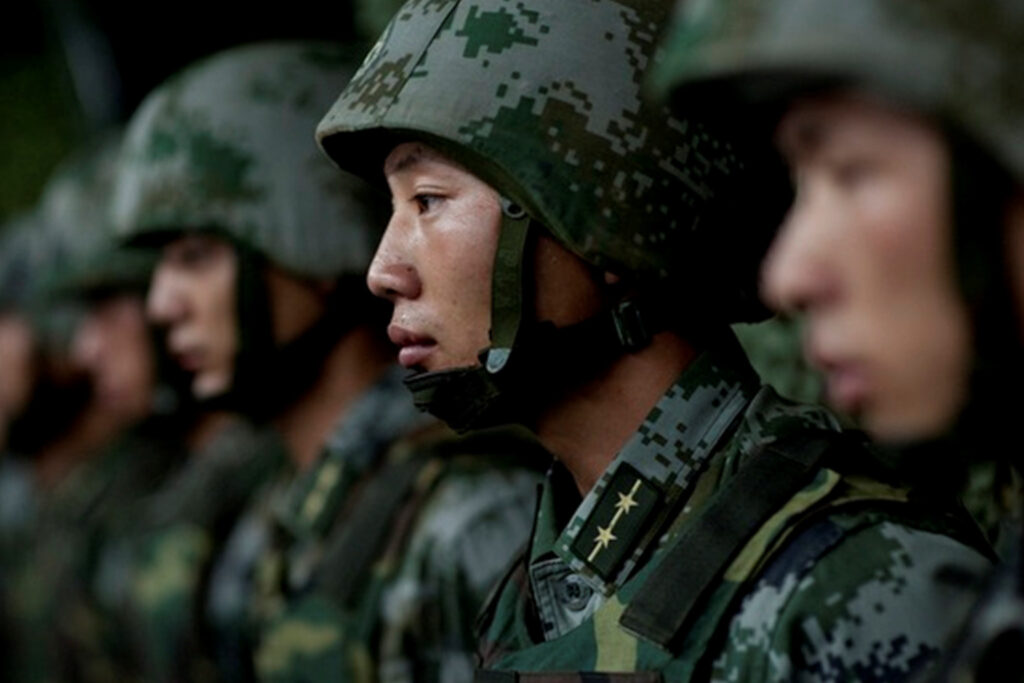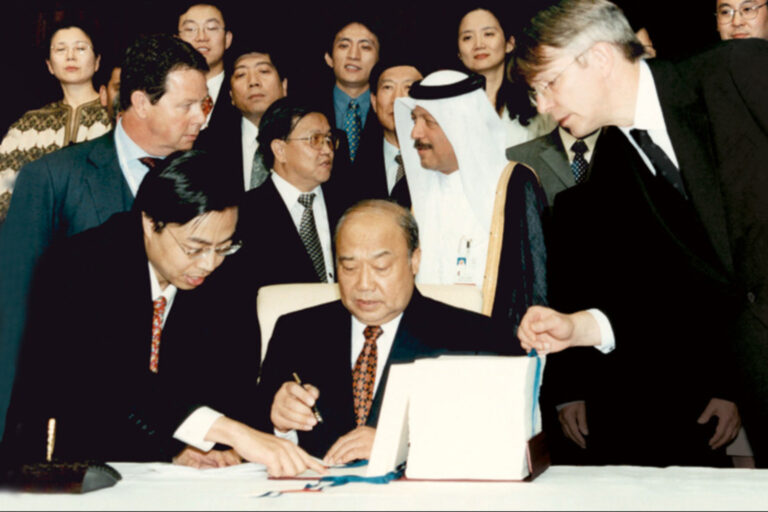In recent years, Beijing has escalated its bellicosity towards Taipei—not least when it launched a large-scale military blockade and imposed various economic sanctions after then-U.S. House Speaker Nancy Pelosi’s visit to the island in 2022. This trend of heightened Chinese bellicosity has led to assessments in Washington that assume a greater Chinese propensity to use force against Taiwan to compel unification. One assessment describes this as China’s “temptation” to reclaim Taiwan.[1] Another analysis suggests that China is “primed for war” over Taiwan.[2] Even official American accounts project a greater prospect of a cross-strait invasion in the coming years. The so-called “Davidson timeline” (proposed by Admiral Philip Davidson in a congressional testimony) posits that China could attempt to annex Taiwan by 2027,[3] an assessment aligning with CIA Director William Burns’ belief that Xi Jinping had likely given orders for the PLA to be prepared for any cross-strait military conflict by that time.[4]
Although a Chinese invasion cannot be discounted as a possibility, a key problem with such assessments (persuasive as they may be to some) is that they either fail to consider or misread China’s longstanding strategic ambiguity on Taiwan.[5] While Beijing will never give up its claim on Taiwan and has been clear that it will not tolerate provocations to its bottom lines, what exactly constitutes those bottom lines is, in reality, equivocal. Even as Chinese pressure against Taipei has increased, this pressure does not necessarily lend to a more trigger-happy PLA and—crucially, does not unveil much about the specific conditions that could trigger China’s employment of force.
Room for Ambiguity: Official White Papers and 2005 Anti-Secession Law
Officially, Beijing has never ruled out the use of force in resolving the Taiwan question. But, the conditions for its employment remain vague. In 2000, during Jiang Zemin’s tenure, the Taiwan Affairs Office (TAO) issued its second white paper titled “The One China Principle and the Taiwan Issue.”[6] This came soon after then-Taiwan President Lee Teng-Hui’s July 1999 statement that negotiations between both sides should be based on a “special state-to-state” relationship.[7] The white paper was highly critical of Lee’s “separatist activities”, including his 1999 advocation of the “state-to-state relations”, his 1997 statement that “Taiwan is already a state with independent sovereignty”, and attempts to transform Taiwan into an “independent political entity” through amendments to the constitution. Significantly, that white paper highlighted some conditions for considering the use of force: (1) the refusal of Taiwan authorities to conduct negotiations on cross-strait reunification “sine die” (indefinitely), or (2) “if a grave turn of events occurs leading up to the separation of Taiwan in any name.”[8]
Then in 2005, under Hu Jintao, China’s national legislature, the National People’s Congress, institutionalized the Anti-Secession Law of which Article 8 states three possible conditions for employing non-peaceful means to reunify Taiwan.[9] First, if secessionist forces “should act under any name or by any means to cause the fact of Taiwan’s secession from China.” Second, the occurrence of any “major incidents entailing Taiwan’s secession from China.” Last, when “possibilities for a peaceful reunification are completely exhausted.”[10] Stark as they seem, these specifications include several ambiguous elements. For example, what does Beijing exactly mean by “major incidents”, “Taiwan’s secession”, “completely exhausted” and on the aforementioned white paper, refusal to conduct reunification negotiations “sine die”? These terminologies have never been clarified by Beijing.
Red Line Crossed?
Apart from Lee Teng-hui’s controversies, his successor, the first DPP president Chen Shui-bian also instigated a series of pro-independence moves. Of note, Chen stated that “Taiwan, China, on each side of the Strait, are different countries”[11] and initiated a nationwide consultative referendum on Taiwan’s relationship with the PRC in March 2004.[12] In an interview with the BBC in 2007, Chen publicly claimed that “Taiwan does not have to declare independence because it is already independent.”[13] That same year, Chen attempted to push forward a referendum agenda for Taiwan to join the United Nations under its name.[14] Although Beijing was certainly affronted by these actions, it did not escalate the situation into one similar to the 1995-1996 crisis—involving missile exercises after Lee Teng Hui’s visit to Cornell University in the US. What is less mentioned, however, is that under the aforementioned laws and documents, these actions could plausibly be interpreted by Beijing as falling under the scope for considering force since they could be portrayed as “acts under any name or by any means” that lead to Taiwan’s secession.
The Continuing Case for Ambiguity
Chinese President Xi Jinping has reaffirmed China’s preferred choice of achieving peaceful cross-strait reunification. But as par for the political course in China, Xi’s report to the 19th and 20th Party Congress in 2017[15] and 2022[16] condemned “separatist activities” in Taiwan, reaffirmed the Chinese Communist Party’s commitment to preventing “Taiwan independence,” and did not rule out the use of force. The 20th Party Congress also saw the words “firmly oppose and contain Taiwan independence” enshrined in the CCP constitution.[17] However, the fundamental question of what constitutes Taiwan independence remained vague, an issue further muddled by the inconvenient reality that Taiwan already enjoys many de facto features of a sovereign state, including a democratically elected government, standing armed forces, and foreign ministry. The TAO’s third white paper on “The Taiwan Question and China’s Reunification in the New Era” promulgated in 2022 did not provide clear answers either.[18] While the 2022 paper condemned some broad actions by the DPP authorities to “collude with external forces” and “deny the 1992 consensus”, it stopped short of categorically listing more specific conditions for the use of force (i.e., what scenarios might count as Taiwan independence or the major incidents leading up to it).
Beijing’s ambiguity ensures that flexibility on whether to use force on Taiwan rests firmly in its court while keeping adversaries guessing. As these conditions encompass room for interpretation, it means that the scope for the use of force is also evolving according to the calculus and considerations of Beijing at that time. On the one hand, it is not inconceivable for a Chinese leader, informed by a narrower interpretation of what represents Taiwan’s secession, to take a more impatient approach to compel reunification. Equally, it is also possible that a Chinese leader could take a more cautious and long-term perspective on the Taiwan question, compelled by pragmatic calculations of the balance of power and China’s domestic circumstances.
In the meantime, the uncertainty surrounding China’s red lines[19] discourages countries from behaving in ways that may (inadvertently or otherwise) promote Taiwan’s independence because they cannot be certain of what could trigger Beijing’s ire. It also gives Beijing some latitude to exert pressure and interfere in Taiwanese politics. For example, it attempted to frame the 2024 presidential election in Taiwan as a matter of “war and peace”, cautioning voters from voting for DPP’s William Lai by indicating that a Lai presidency could lead the island down the path of military confrontation.[20] These reasons mean that it is in China’s interest to keep a degree of unpredictability regarding its red lines in Taiwan. This enduring strategic ambiguity also means that current indications (including increased bellicosity towards Taipei) still do not tell us that China is likely to invade Taiwan by 2027 any more than some other time in the future.
Tiong Wei Jie is pursuing a PhD degree in International Relations at the S. Rajaratnam School of International Studies, Nanyang Technological University (NTU), Singapore. He holds a Master’s in Social Science (China and Global Governance) from the Nanyang Centre of Public Administration, NTU.
Hoo Tiang Boon is an Associate Professor at the School of Social Sciences, College of Humanities, Arts & Social Sciences, Nanyang Technological University, Singapore. He holds a PhD in International Relations from the University of Oxford and was a recipient of the US-ASEAN Fulbright award. He is the author of several publications on China and cross-strait relations, including China’s Global Identity: Considering the Responsibilities of Great Power (Washington, DC: Georgetown University Press).
Endnotes
[1] Oriana Mastro, “The Taiwan Temptation: Why Beijing Might Resort to Force”, Foreign Affairs (July/August 2021).
[2] Michael Beckley and Hal Brands, “How Primed for War is China? Risk Signals for a Conflict are Flashing Red,” Foreign Policy, February 4, 2024. https://foreignpolicy.com/2024/02/04/china-war-military-taiwan-us-asia-xi-escalation-crisis/. See as well: Hal Brands, “Deterrence in Taiwan is Failing,” Foreign Policy, September 8, 2023. https://foreignpolicy.com/2023/09/08/us-military-deterrence-china-taiwan-war-east-asia/
[3] Mikio Sugeno and Tsuyoshi Nagasawa, “Xi’s potential 2027 transition poses threat to Taiwan: Davidson,” Nikkei Asia, September 18, 2021. https://asia.nikkei.com/Editor-s-Picks/Interview/Xi-s-potential-2027-transition-poses-threat-to-Taiwan-Davidson
[4] Michael Martina and David Brunnstrom, “CIA chief warns against underestimating Xi’s ambitions toward Taiwan,” Reuters, February 3, 2023. https://www.reuters.com/world/cia-chief-says-chinas-xi-little-sobered-by-ukraine-war-2023-02-02/
[5] Most articles also ignore the idea of a Chinese strategic ambiguity in the Taiwan strait. When the term “strategic ambiguity” is employed in cross-strait literature, it typically refers to American strategic ambiguity. See, for example, Hoo Tiang Boon and Hannah Elyse Sworn, “Strategic ambiguity and the Trumpian approach to China–Taiwan relations,” International Affairs, Vol. 96, No. 6 (2020).
[6] “PRC White Paper–The One-China Principle and the Taiwan Issue”, Taiwan Document Project, February 21, 2022. http://www.taiwandocuments.org/white.htm
[7] Rebecca MacKinnon and Mike Chinoy, “China lashes Taiwan over Lee’s rhetorical change,” CNN, July 13, 1999. http://edition.cnn.com/WORLD/asiapcf/9907/13/china.taiwan/index.html
[8] “PRC White Paper–The One-China Principle and the Taiwan Issue.”
[9] “Anti-Secession Law [反分裂国家法]”, CSIS Interpret: China, original work published in Xinhua News Agency [新华社], March 14, 2005. https://interpret.csis.org/translations/anti-secession-law/
[10] Ibid.
[11] John Pomfret, “China and Taiwan Back Away From New Confrontation,” The Washington Post, August 9, 2002. https://www.washingtonpost.com/archive/politics/2002/08/10/china-and-taiwan-back-away-from-new-confrontation/85e088fe-f6c7-42f9-b42a-edff8a33b5cf/
[12] “Taiwan in Time: The dawn of the referendum era”, Taipei Times, December 2, 2018. https://www.taipeitimes.com/News/feat/archives/2018/12/02/2003705330
[13] “Taiwan independent, Chen tells BBC”, Taipei Times, August 23, 2007.https://www.taipeitimes.com/News/front/archives/2007/08/23/2003375414
[14] “Chen calls for referendum on Taiwan’s UN membership bid,” South China Morning Post, June 19, 2007. https://www.scmp.com/article/597395/chen-calls-referendum-taiwans-un-membership-bid
[15] “Full text of Xi Jinping’s Report at 19th CPC National Congress”, Xinhua, November 3 2017. http://www.xinhuanet.com/english/special/2017-11/03/c_136725942.htm
[16] “Full text of the report to the 20th National Congress of the Communist Party of China”, Ministry of Foreign Affairs of the People’s Republic of China, October 25, 2022. https://www.fmprc.gov.cn/mfa_eng/zxxx_662805/202210/t20221025_10791908.html
[17] “Did CPC congress make new Taiwan policy?” China Daily, November 14, 2022. https://www.chinadaily.com.cn/a/202211/14/WS6371e0cba3104917543298fe.html
[18] “White Paper: The Taiwan Question and China’s Reunification in the New Era”, Embassy of the People’s Republic of China in the United States of America, August 10, 2022. http://us.china-embassy.gov.cn/eng/zgyw/202208/t20220810_10740168.htm
[19] For more on China’s red lines or what Beijing calls “core interests,” see Hoo Tiang Boon,” Hardening the Hard, Softening the Soft: Assertiveness and China’s Regional Strategy,“ Journal of Strategic Studies, Vol. 40, No. 5 (2017).
[20] “Chinese official urges Taiwan’s people to make ‘correct choice’ on election,” Reuters, January 3, 2024. https://www.reuters.com/world/asia-pacific/chinese-official-urges-taiwans-people-make-correct-choice-election-2024-01-03/




